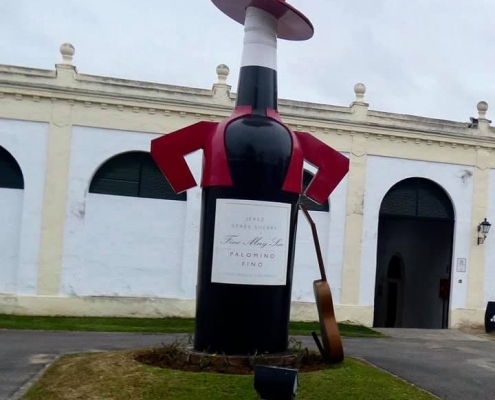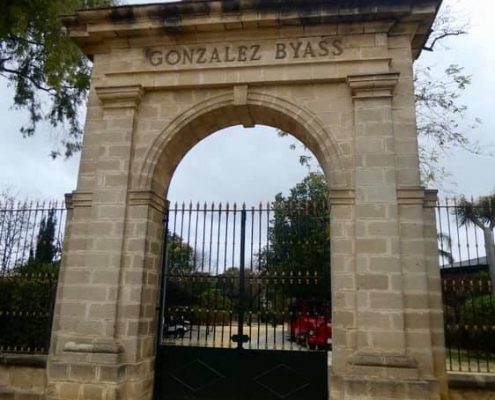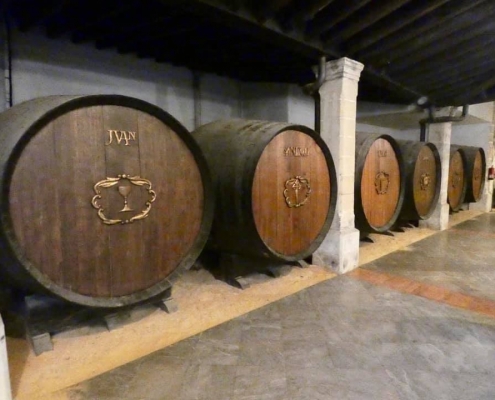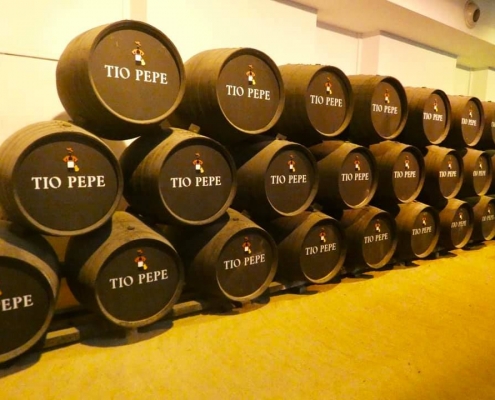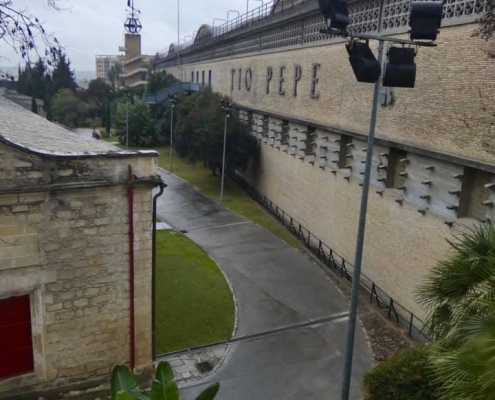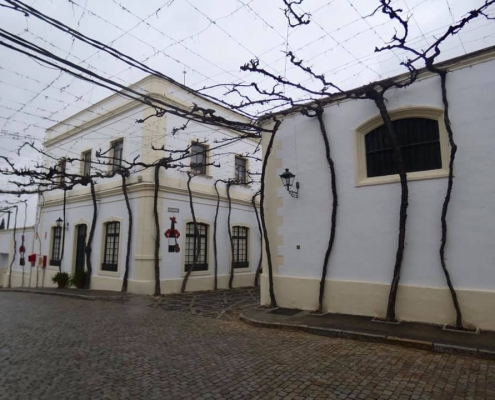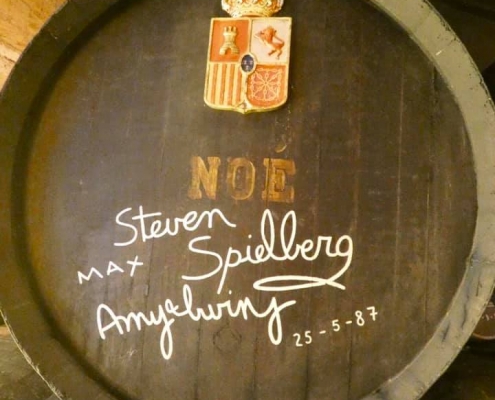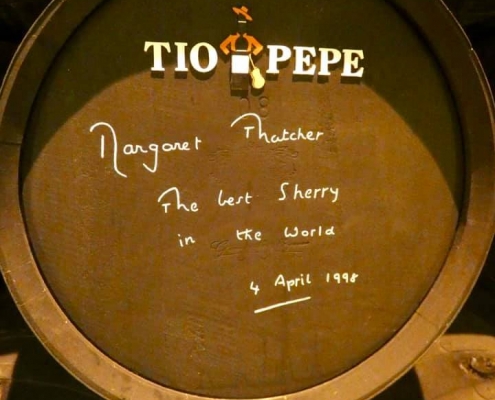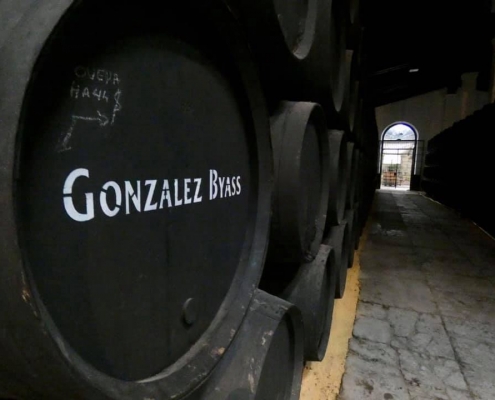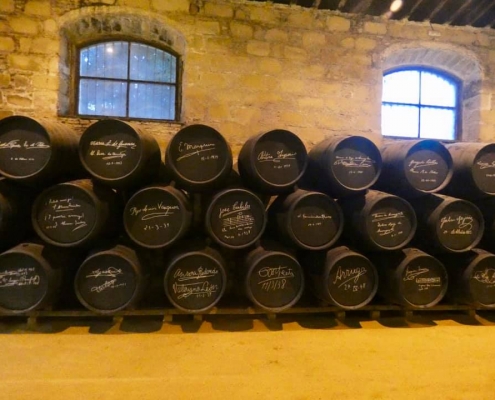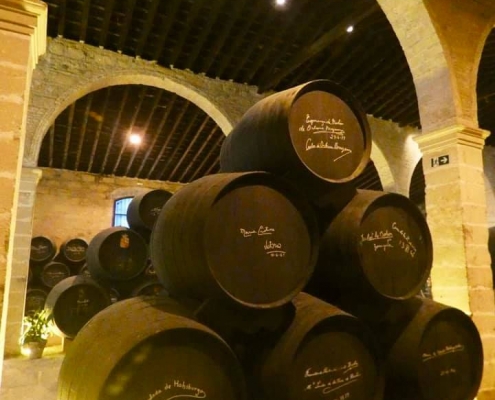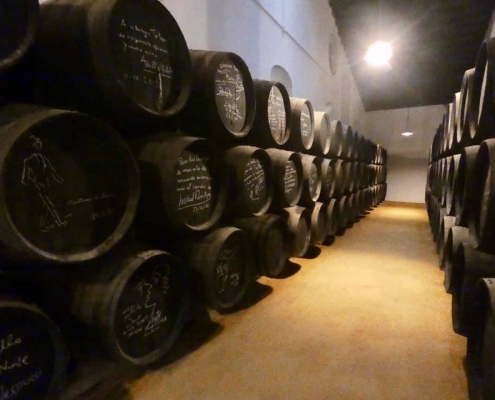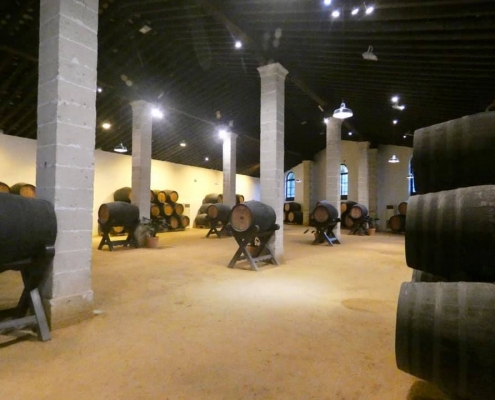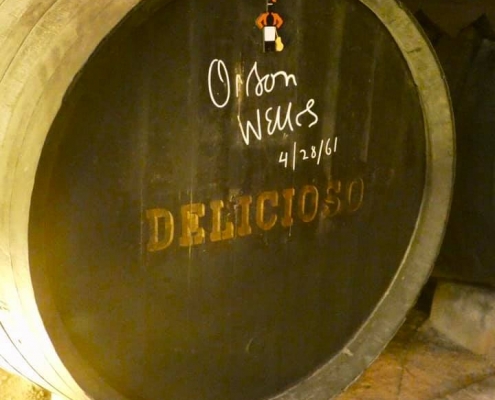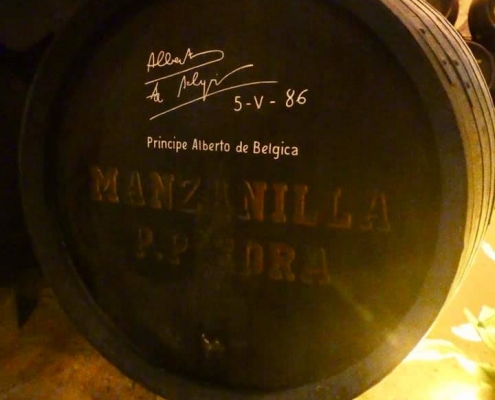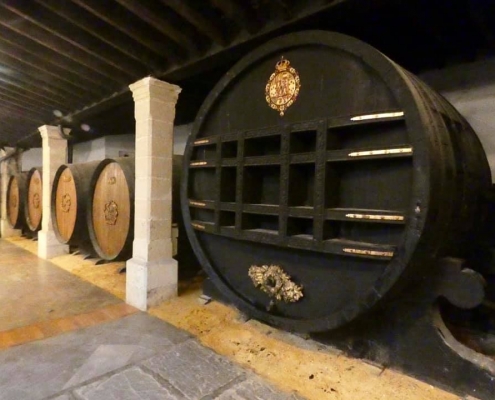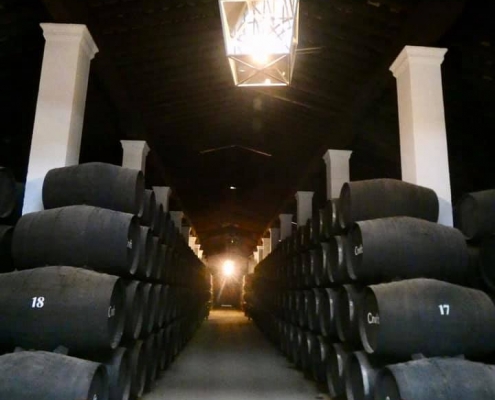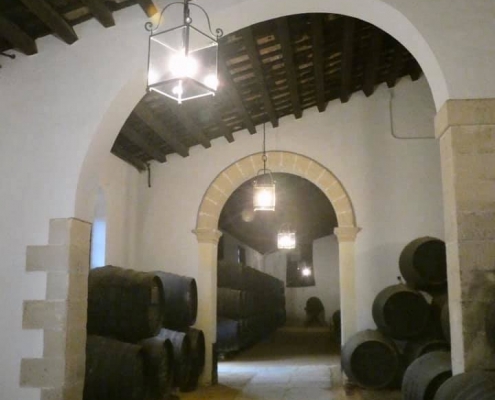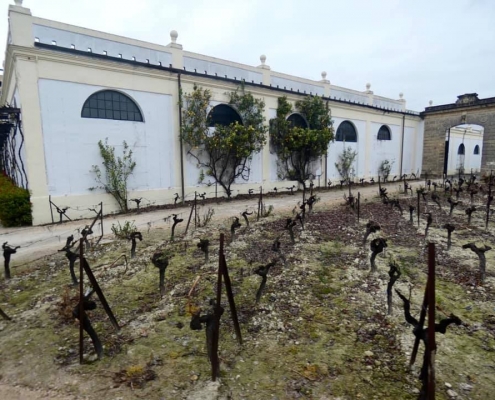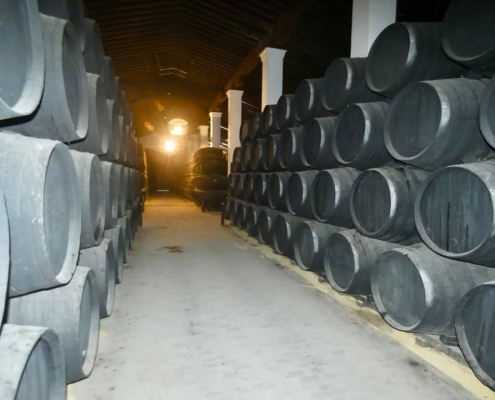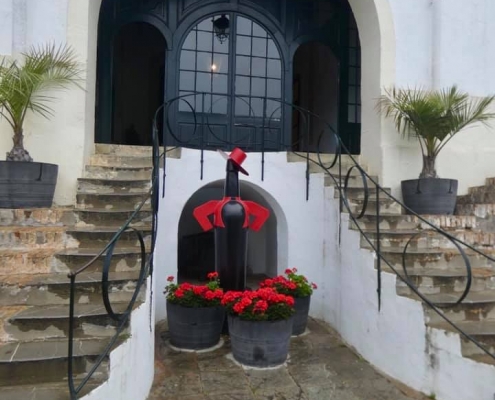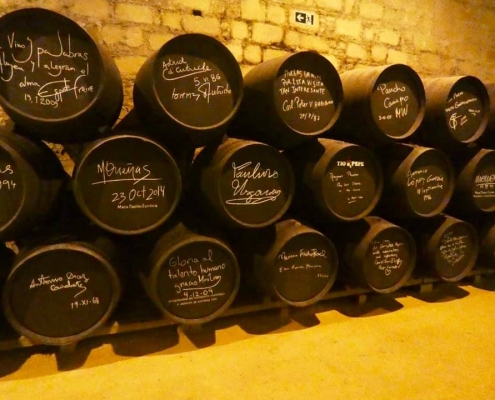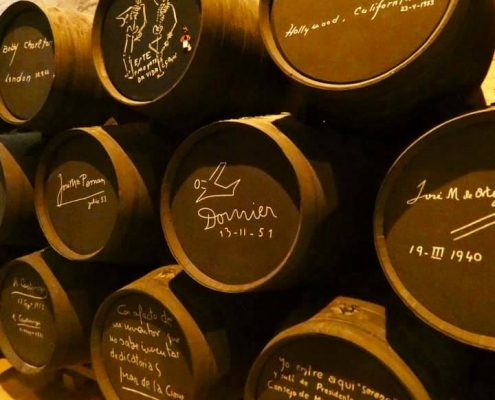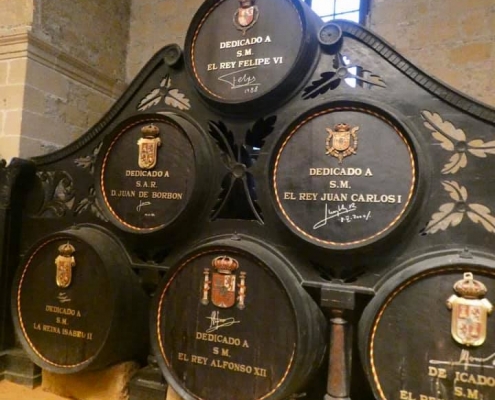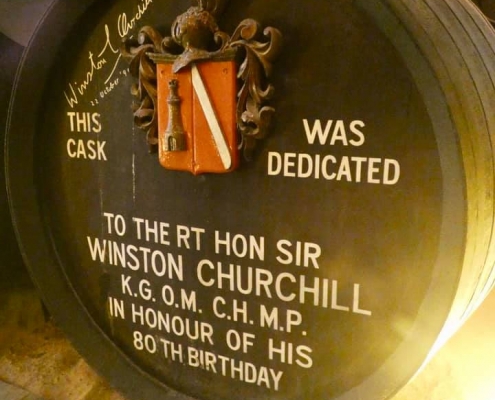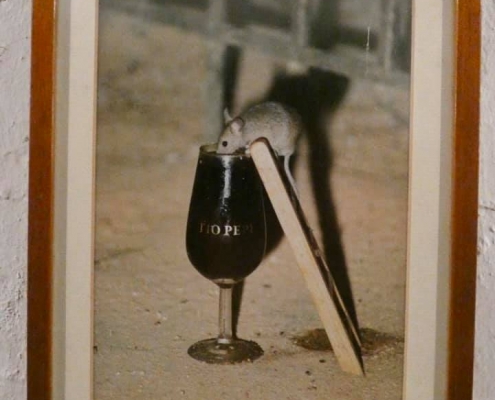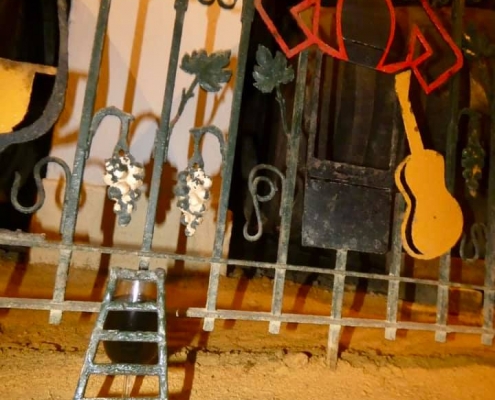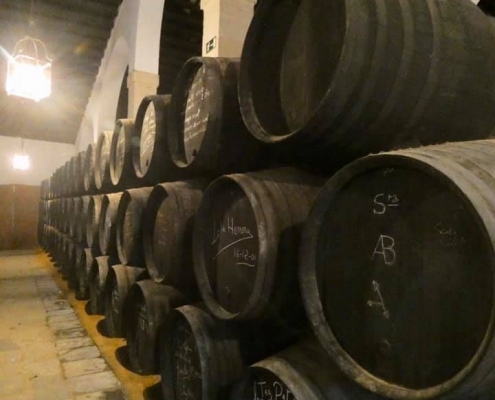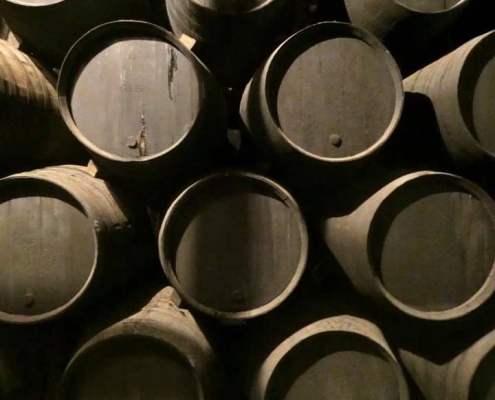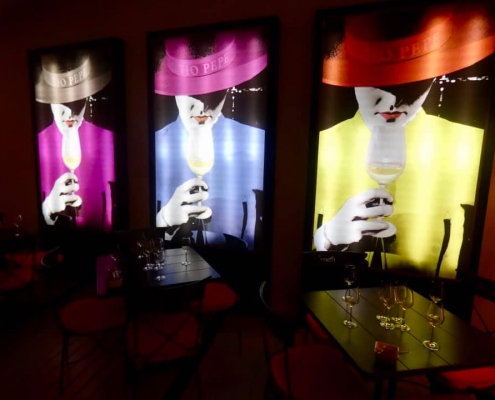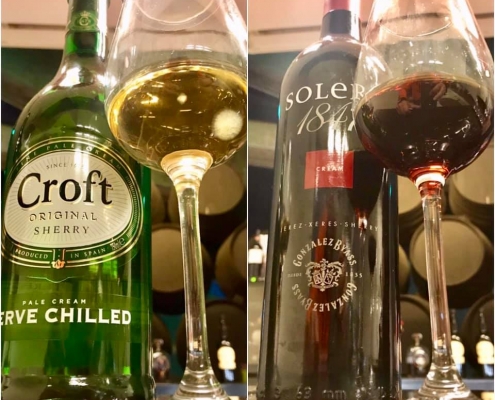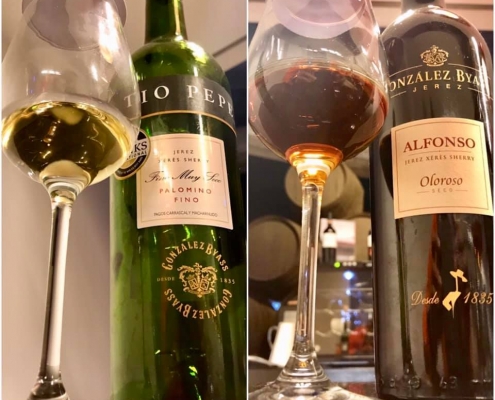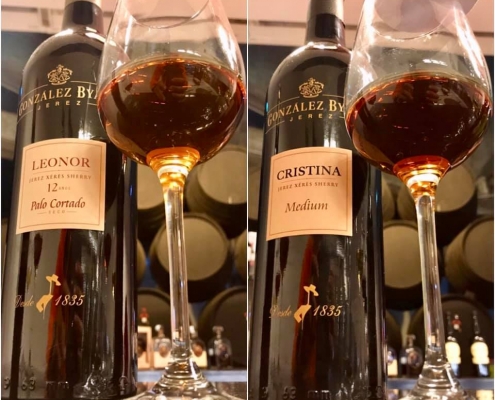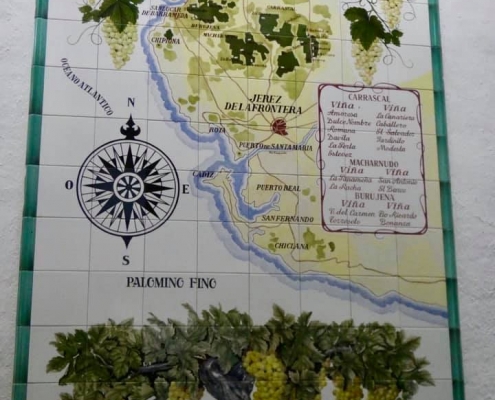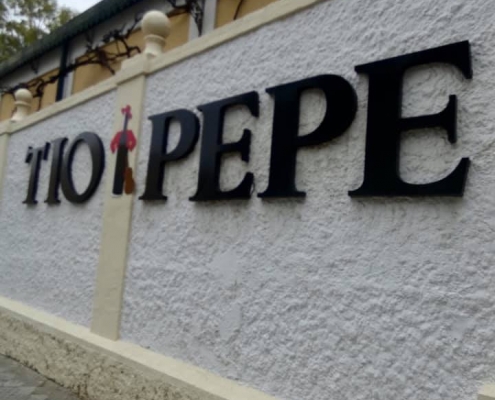Spain/Andalusia: Jerez de la Frontera – Tio Pepe Bodegas
Having truly discovered and understood porto wines in Portugal last spring, it was now time to follow with sherry (or jerez as it’s more properly known – “sherry” is just a butchered British pronunciation of it). Just like champagne or porto, the true jerez has a DO label (Denomination of Origin) and must come from grapes and wineries around the town of Jerez de la Frontera. And the best place to experience it all is at the bodegas (wineries) of Gonzales Byass, the oldest and most famous sherry house in the world, maker of the finest and most expensive sherries. Turns out, making sherry is an insanely complex process: the wine is made almost exclusively from a local variety of white grape (palomino – 90%, pedro ximenez – 10%), which are harvested in September and pressed very lightly to produce highly-prized first pressing (primera yema), which is used for the finest quality jerez. The juice is then fermented for a couple months to produce 11% dry wine. Now the real fun begins – the base wine is fortified with grape alcohol to only 15% and poured into oak barrels with space left on top; low alcohol allows for a layer of yeast known as “flor”, which prevents oxidization and allows the wine to mature like that. Then an elaborate system of “solera” is used where the wine matures and a small portion is moved from one barrel to the other over the years – each barrel containing progressively older wine. The final sherry is taken from the last barrel and so it doesn’t have the age per se. As you tour the extensive bodegas of Gonzales Byass right in the heart of Jerez de la Frontera, you get to see all the steps and the final oak barrels – no cellars here as jerez is always matured above ground. There is a special hall where all barrels are signed by celebrities – kings, princes, movie starts, writers, politicians, etc. There is also a small spot where a glass of sherry is poured every night with a little ladder next to the glass for tiny mice to climb and drink it – a tradition that is over a century old. Final sherry comes in a variety of styles depending on oxidization and fortification – fino (dryest and finest), oloroso (aged longer with higher alcohol content and dark color), palo cortado (with additional fortification after initially developing as fino), cream, and dulce (both being sweeter and heavier alcohol). And of course, you get to taste all of this at the end! And I am now a jerez-addict….

